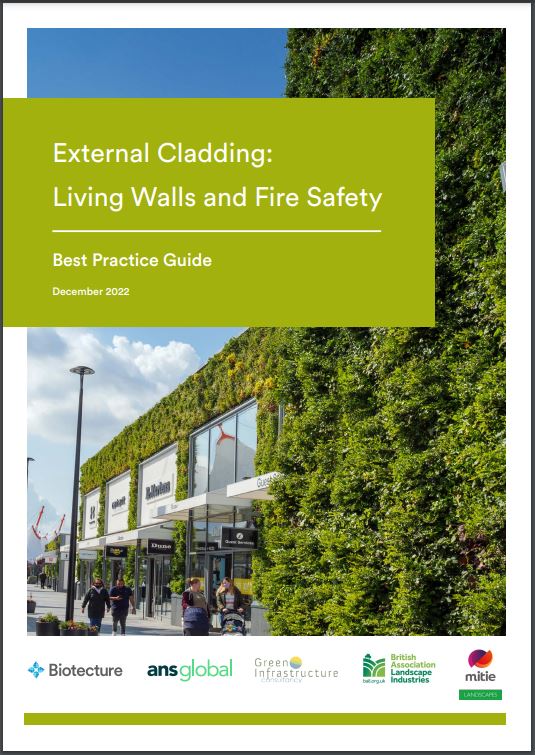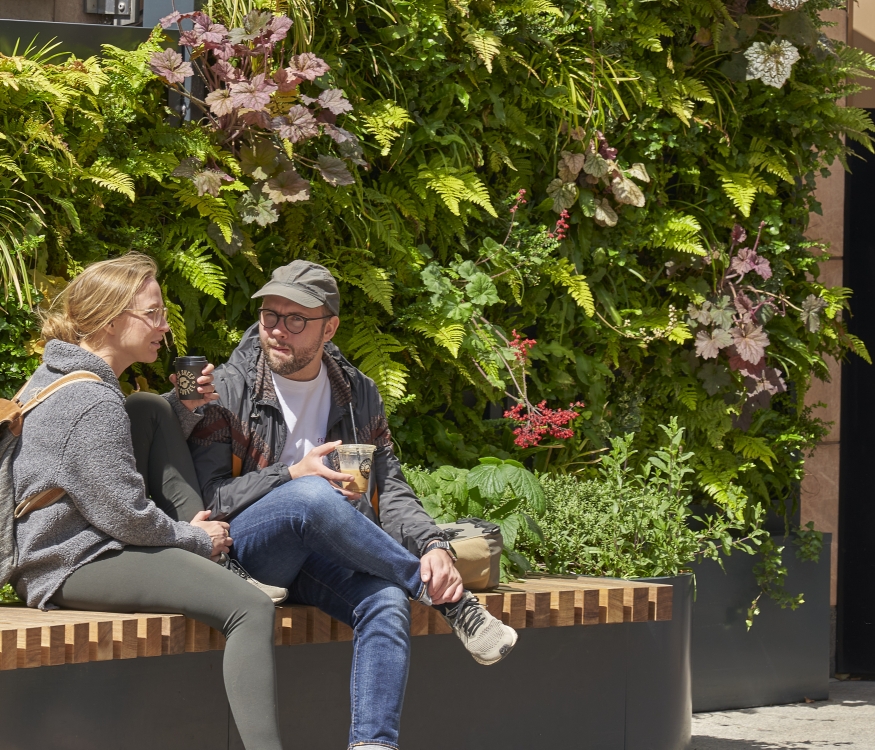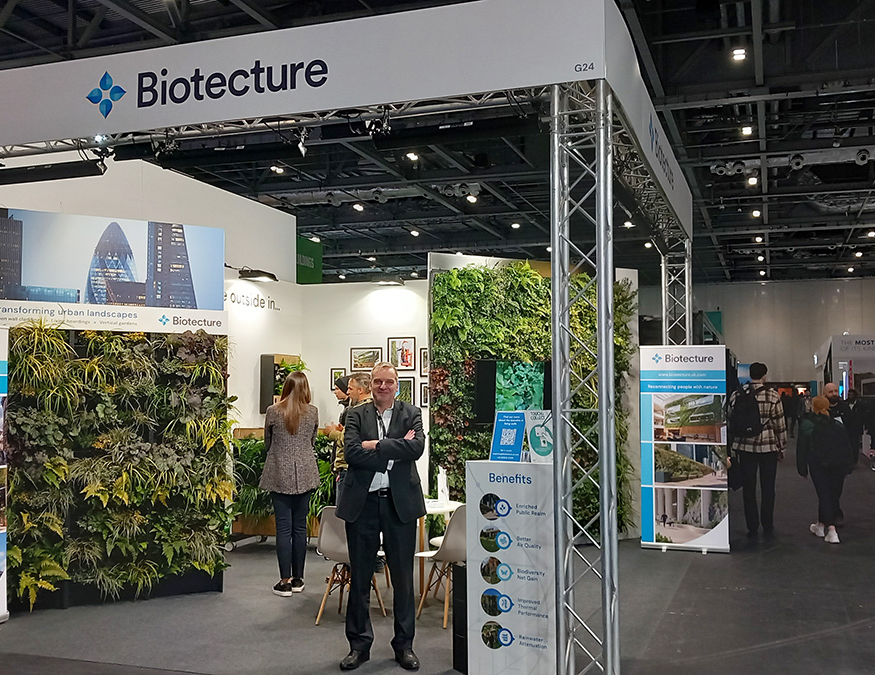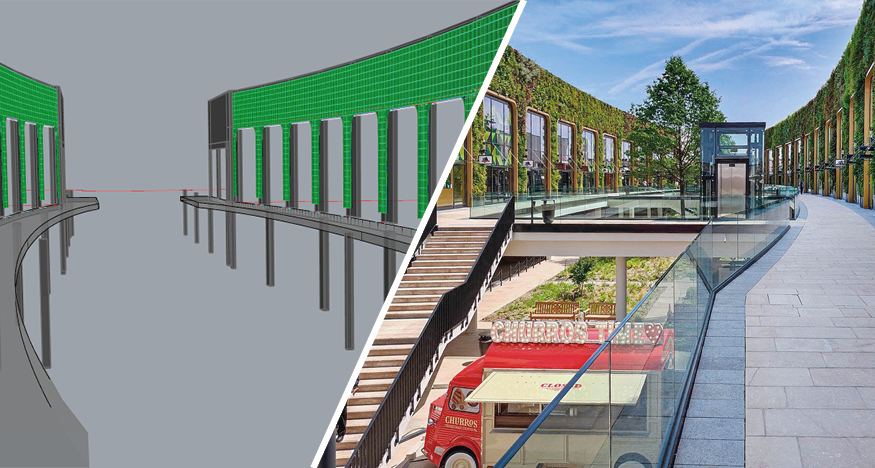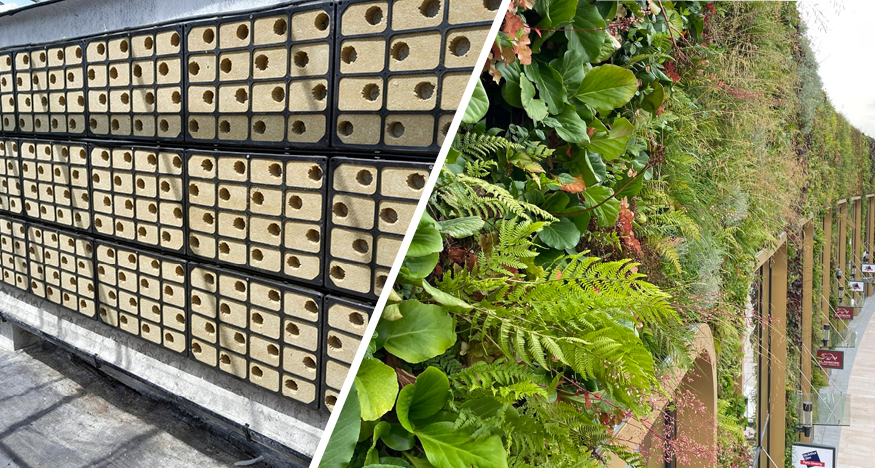We understand that fire safety is a top priority when designing a building, that’s why we have collaborated with other industry leaders to produce an External Cladding: Living Walls and Fire Safety Best Practice Guide.
On 1 June 2022 the government introduced a new framework to further strengthen and clarify building regulations and fire risk guidance as part of wider reforms to building safety. National legislation now clearly determines the building types where external cladding can be used, which includes Living Wall installations. This means that residential dwellings above 11m high where people sleep are no longer compliant, but all other building types are.
In response, the Living Wall industry’s two biggest installers, Biotecture and ANS Global, alongside the British Association of Landscape Industries and the Green Infrastructure Consultancy, have summarised the changes to the government’s ‘Approved Document B’ and included industry recommendations on the specifications and materials to be used, including the type of plants.
Ways to minimise risk of fire, outlined in the guidance, include selecting plants with low calorific value and propensity for heat and enacting robust irrigation procedures, preventing plants from drying out.
The guide also explains the third-party Engineering Assessment reports and testing procedures to ensure compliance, such as fire certification test BS EN 13501-1, and effective maintenance procedures to follow
The purpose of our Best Practice Guidance is two-fold:
- To clarify details of the June 2022 update to Approved Document B with specific reference to Living Walls as external cladding
- To allow any regulatory or other body to specify and condition Living Walls as external cladding with confidence.
The summary of Best Practice Guidance states that a Living Wall as external cladding should:
- Comply with the relevant requirements of Approved Document B; June 2022 update in accordance with independent third-party testing of the whole system including plants through whole system Engineering Assessments
- Only include materials and plants that have been incorporated in destructive third-party Engineering Assessments or that are demonstrably similar in nature in reaction to fire to those that have been part of full system Engineering Assessment tests as stated in the guidance
- Include an irrigation system that has been designed, installed, and operated in accordance with the Best Practice Guidance
- Always have a proactive maintenance contract in place with a proven supplier who can demonstrate experience of ensuring continued compliance for Fire Safety.
Richard Sabin, Managing Director, Biotecture said: “This industry Best Practice Guidance is designed to clarify and explain the latest regulatory framework for Living Wall installations and offer recommendations to allow architects and specifiers to condition with confidence.
“We recommend that the design and planning industry follow this guidance to minimise fire risk and ensure Living Walls remain compliant with national regulations, as we drive forward urban greening and maximise the benefits of green infrastructure in our cities and towns.”
Richard Silcock, Managing Director, ANS Global said: “Living Walls clean the air around us, drive biodiversity and make us happier. As an industry we hope this guidance will provide helpful direction for those who plan our cities and enable us to tap into the potential of urban spaces across the country, in a responsible and compliant way. Together we can plan for a greener, healthier future.”

